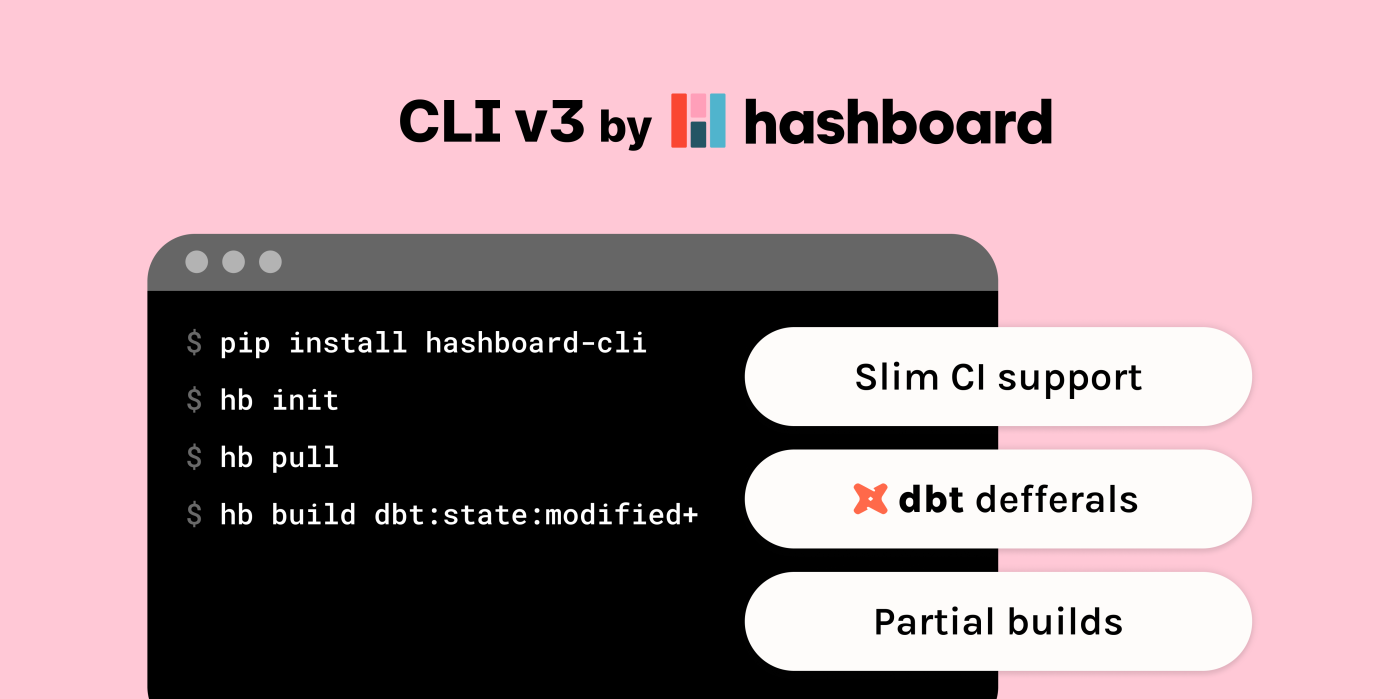
Version 3 of the Hashboard CLI, available today, includes a host of new features focused on enabling large data teams with advanced development workflows. We've also simplified some of Hashboard’s core “BI-as-code” concepts to make them faster and easier to use.
In Hashboard, code-based and UI-based workflows live side-by-side and can be flexibly adopted. There are times when data work is best done in the browser — visual, iterative, what-you-see-is-what-you-get exploration. But, as your data stack matures, your critical models, charts, and dashboards benefit from the better governance and testability of a code-based workflow.
Good governance is especially important if you are using dbt. As dbt CEO Tristan Handy articulated earlier this month, a new development lifecycle for modern analytics is beginning to emerge. For larger teams, developers are often iterating on multiple models simultaneously and deferring datasets across different environments. In this context, it’s more important than ever to ensure your BI stack is in sync with all of this upstream development.
With v3 of our CLI we’re introducing better semantics, faster workflows, and a deeper integration with advanced dbt workflows — all aimed at realizing our vision of a seamless and modern development workflow for BI.
Here are some highlights:
Native support for dbt Slim CI workflows
Teams with large dbt codebases can now leverage deferrals when validating and previewing changes across dbt and Hashboard. When enabled, Hashboard models will automatically load data from your production database if the corresponding dbt model has not been changed.
Partial builds
In v3, we’re defaulting builds to be partial by default — which means different developers can independently test and deploy changes to different resources in your project. You also have more flexibility in choosing which parts of your Hashboard project are deployed with code. For instance, you can choose to govern the layout of your executive dashboard with code but maintain a UI-based dev flow for your modeling layer.
Apply changes instantly from the CLI or UI
We’ve rebuilt how we track resources so that applying changes with code is now 10x faster. Multiple users can now run builds in parallel without conflicting, and changes can be applied instantly once they look good. We’ll still validate all of your changes to ensure that they are safe to deploy to your project.
GitHub Action templates for CI/CD
We’ve published updated GitHub Action templates for a variety of CI/CD workflows. Preview your BI changes as part of your pull requests, integrate with dbt Cloud CI jobs, or automatically deploy your Hashboard resources when commits are merged to your production branch.
On the Horizon
The v3 Hashboard CLI also includes significant backend upgrades which will enable new features later this year:
Code review workflow for non-technical users
Thanks to a new unified change management backend, your end users will soon be able to draft changes in the UI and then send those changes as a code review to your data team. Combined with role-based access control, you’ll be able to allow end users to experiment with the business logic in your models while enforcing that any proposed changes are approved first by your data team.
Bi-Directional Syncing
We’re building improved workflows for pushing your Hashboard resource changes back into your git repository. This will help prevent drift between the UI and your code repository and cut down on time spent maintaining your CI/CD system.
Model and Dashboard Templates
Data teams across companies are often solving very similar problems. Partial builds in the v3 CLI will allow you to bootstrap your Hashboard resources using external templates, without blocking your non-technical users from developing in the Hashboard UI.
Check out the v3 CLI documentation or v2 migration guide to get started today!
